
DEDICATED TO MY FAMILY
Jan, Alexa, and Nick.

Truth be told, I did not set out to write a book called The Orchid Whisperer. But my editor knew I already had the moniker and felt it would be a good title, so I decided to run with it. (Plus, I liked the idea of creating an orchid book that is around the same retail price as a regular orchid). I have been growing and decorating with orchids for thirty years and the reality is that the more time you spend with orchids the better you get to know them. Now Im sharing what I know in this book.
Growing up in Berkeley, I spent quite a lot of time in the garden. When I was about twelve, my grandmother announced that I had a way with plants, just like her father who was a respected Russian naturalist and paleontologist. By my middle teens, I was working after school as a gardener. It was in these gardens that I discovered my first orchids.
In my early twenties, a job opportunity to work as an orchid consultant for the city of Atlanta presented itself. A fancy title, but in reality it was more about repotting, cleaning the orchids, and establishing some sort of regular maintenance schedule. I was very luckywhen I left, all of the orchids were blooming their heads off and I had great letters of recommendation in hand. I returned to San Francisco and was hired by the Rod McLellan Orchid Company (one of the very best firms at the time) as the head of their orchidboarding department. It was my dream job.
After a while, wanting more of the orchid world, I left the firm and several of my major clients asked if I would keep them on. Of course I agreed, and from there I was able to form my own orchid maintenance, sales, and boarding business.
I started supplying interior decorators and worked to get orchids into major hotels, restaurants, and department stores. It was an exciting time. I selected and maintained the orchids for the famous Compass Rose Room at the St. Francis Hotel in San Francisco. I did the orchids for Saks Fifth Avenue, who kept their orchids on the design and couture floor, and I was in charge of the orchid program for Nordstrom, had my retail orchid shop at the old Gumps store, and rented orchids to both Ralph Lauren Polo and Herms of Paris. I also planned special orchid events for fashion shows and big firms like Cartier. During this period I was exposed to an incredible array of orchid growing and display situations, at every economic and social level.
I also had private clients who hired me to manage their personal orchid collections and do the orchid design work in their homes. I continue to do this to this dayIve had some of my clients for over twenty years! This has been fun, exciting work, allowing me to hunt for orchids in the jungle (which is really awesome, especially when youre getting paid for it), attend auctions for luxurious containers for displays, and have the freedom to express my creativity in my clients homes.
I dont know if all of this qualifies me as an orchid whisperer. I do know how to grow orchids one client likes to claim that I can make a brick bloomand I share the tricks Ive learned over the years in these pages.

Beautiful, easy-to-grow phalaenopsis, with their long-lasting flowers, are a beginner favorite.
The book starts out with a handy visual glossary to familiarize you with the important terms and parts of the plant before getting started. From there, you will learn how and where to buy orchids (that big-box chain might actually be your best bet); which are the top twelve most popular orchids and what you need to know to grow them; how to care for your orchids so they bloom again and again; and, finally, how to display and decorate with orchids.
I wrote this book primarily with the goal of helping the beginner realize that growing orchids is like having a pet or a child: If you pay attention and provide for their needs, they will repay you with love. I also hope to take the fear out of orchid growing. Even if youve failed to bloom an orchid in the past, dont worry. There are hundreds of tips included here to help you keep your orchids blooming, no matter your experience level, budget, location, or environment. But the main thing I hope you learn is that growing orchids mimics life: the more energy you put into it, the more you will receive.

AN ORCHID GLOSSARY

 AERIAL ROOTS / Roots growing in the air at the base or stem of an orchid, absorbing water and nutrients from the air and also acting to physically support and secure the orchid in its habitat.
AERIAL ROOTS / Roots growing in the air at the base or stem of an orchid, absorbing water and nutrients from the air and also acting to physically support and secure the orchid in its habitat.
BASE / The bottom of the orchid plant, just above the underground root system.
 BULB / A ball-shaped growth above the underground roots, and below the top leaves in orchids such as oncidiums. This is where the orchid stores nutrients and water.
BULB / A ball-shaped growth above the underground roots, and below the top leaves in orchids such as oncidiums. This is where the orchid stores nutrients and water.
 CANE / The elongated stem-like growth that holds a flower spike in orchids such as dendrobiums.
CANE / The elongated stem-like growth that holds a flower spike in orchids such as dendrobiums.
 CROWN / The top of the leaf section of an orchid, where new leaves grow.
CROWN / The top of the leaf section of an orchid, where new leaves grow.
DORMANT PERIOD / The time period when the orchid is resting and not actively growing or blooming.
 EPIPHYTIC / Orchids that grow on other plants or objects, taking their nutrients from the air. Common for orchids that grow above ground.
EPIPHYTIC / Orchids that grow on other plants or objects, taking their nutrients from the air. Common for orchids that grow above ground.
 FLOWER NODE / The place where a flower joins a flower spike.
FLOWER NODE / The place where a flower joins a flower spike.
 FLOWER SHEATH / A leafy tissue that surrounds an emerging flower spike.
FLOWER SHEATH / A leafy tissue that surrounds an emerging flower spike.
 FLOWER SPIKE / A stem that carries flowers.
FLOWER SPIKE / A stem that carries flowers.
GENUS / A named category of orchids that are similar either in appearance or DNA structure; the category just above species.
Next page
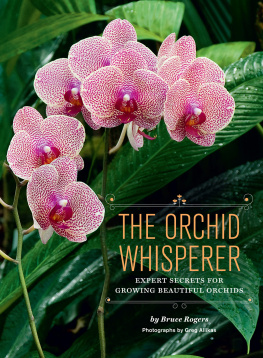
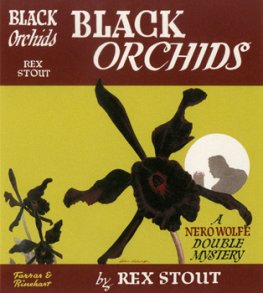


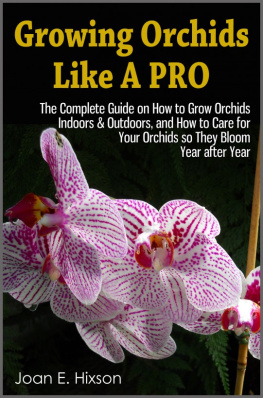
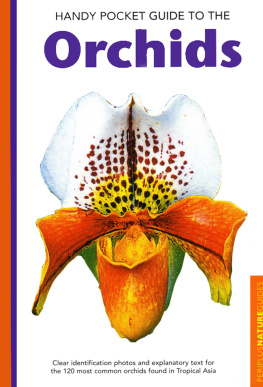
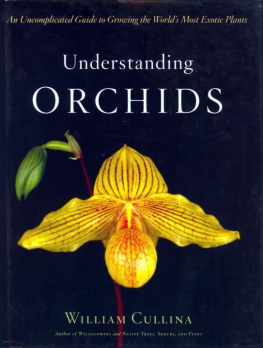
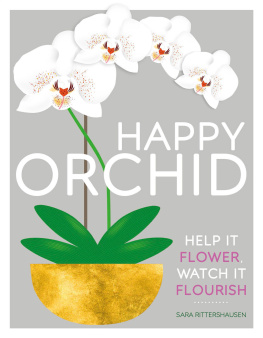




 AERIAL ROOTS / Roots growing in the air at the base or stem of an orchid, absorbing water and nutrients from the air and also acting to physically support and secure the orchid in its habitat.
AERIAL ROOTS / Roots growing in the air at the base or stem of an orchid, absorbing water and nutrients from the air and also acting to physically support and secure the orchid in its habitat. BULB / A ball-shaped growth above the underground roots, and below the top leaves in orchids such as oncidiums. This is where the orchid stores nutrients and water.
BULB / A ball-shaped growth above the underground roots, and below the top leaves in orchids such as oncidiums. This is where the orchid stores nutrients and water. CANE / The elongated stem-like growth that holds a flower spike in orchids such as dendrobiums.
CANE / The elongated stem-like growth that holds a flower spike in orchids such as dendrobiums. CROWN / The top of the leaf section of an orchid, where new leaves grow.
CROWN / The top of the leaf section of an orchid, where new leaves grow. EPIPHYTIC / Orchids that grow on other plants or objects, taking their nutrients from the air. Common for orchids that grow above ground.
EPIPHYTIC / Orchids that grow on other plants or objects, taking their nutrients from the air. Common for orchids that grow above ground. FLOWER NODE / The place where a flower joins a flower spike.
FLOWER NODE / The place where a flower joins a flower spike. FLOWER SHEATH / A leafy tissue that surrounds an emerging flower spike.
FLOWER SHEATH / A leafy tissue that surrounds an emerging flower spike. FLOWER SPIKE / A stem that carries flowers.
FLOWER SPIKE / A stem that carries flowers.